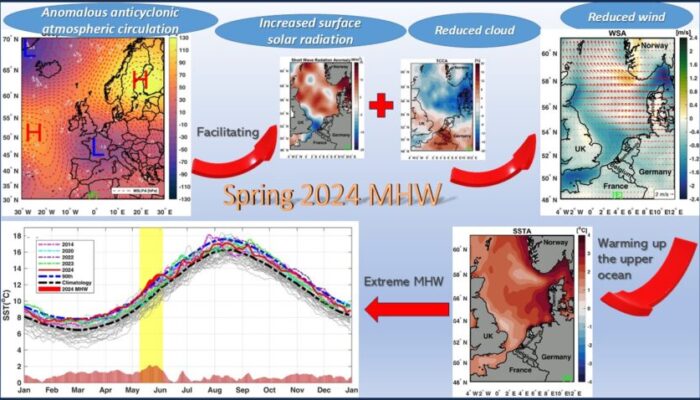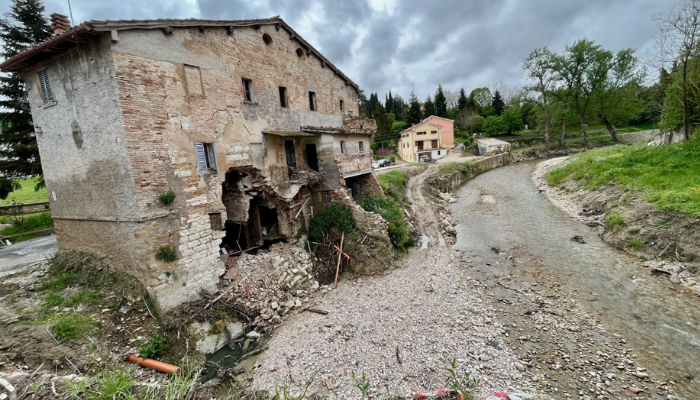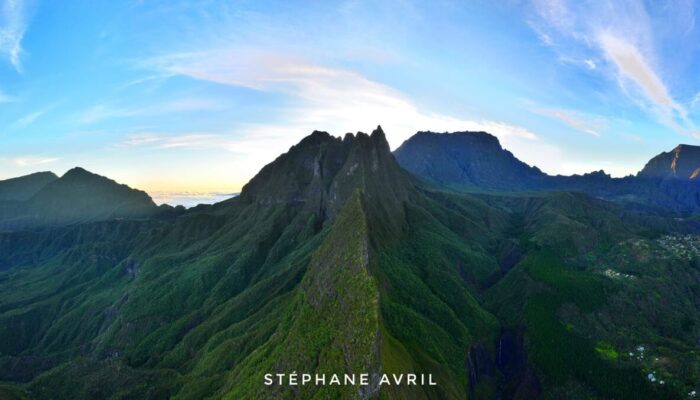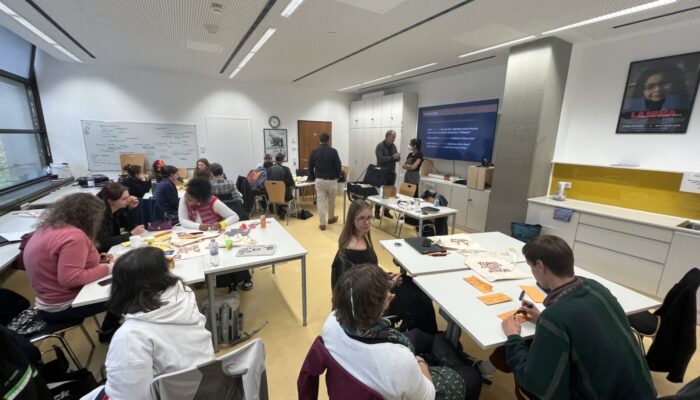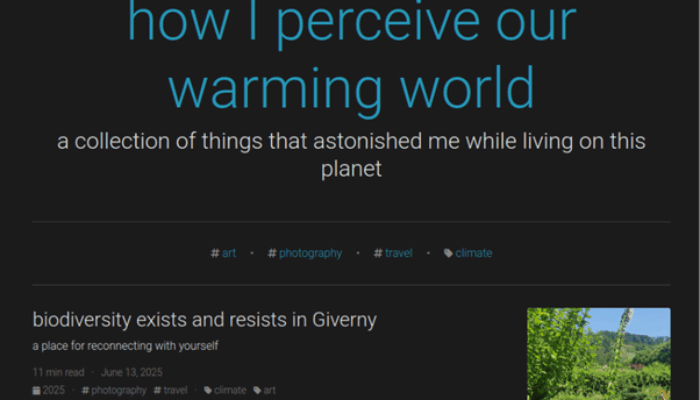The carbon footprint of scientific collaboration has become an increasingly debated topic. Conferences, workshops, and research travel remain central to how science function, yet they also contribute to global greenhouse gas emissions. Since the pandemic era scientists also learned to work virtually and to attend workshops and conferences online. Understanding the carbon footprint, and how it comp ...[Read More]
Climate: Past, Present & Future
The North Sea Is Heating Up: What Marine Heatwaves Tell Us About Climate Change?
As scientists, we are acutely aware that our planet’s climate is changing, but the speed and severity of these changes can still surprise us. As global temperatures rise, certain regions become hotspots experiencing more intense and amplified warming. As a postdoctoral researcher at the University of Liège, I have been closely studying amplified warming and marine heatwaves in the North Sea under ...[Read More]
Hydrological Sciences
“What if …?” – Creativity in flood risk management using counterfactual scenarios
Floods are among the most devastating natural hazards, claiming lives and damaging infrastructure. The question of how we can be prepared for these extreme events quickly reaches an almost philosophical level: First of all, what is an extreme event? Second, how can we know what the future will bring? For the last century hydrologists have relied on statistical concepts, which are based on observ ...[Read More]
Geodesy
Expanding the picture: Franck Ghomsi
What does a geodesist look like? And what happens if you don’t “look the part”? Today, Franck Ghomsi, a Black African scientist, takes us along on his journey between South Africa, Canada and Cameroon. Franck does not only research the impact of climate change on coasts with geodetic techniques, but at the same time became an expert in self-motivation, battling racism and fightin ...[Read More]
Hydrological Sciences
Are you our next HS Early Career Scientist Representative?
It’s time to grow the Early Career Scientists (ECS) team of the Hydrological Sciences Division! We’re looking for the next ECS representative to contribute to coordinating social media, our newsletter, online campfires, our podcast series, and to join our fantastic blog team. Interested? Keep reading to find out more! What do ECS teams do? EGU’s scientific activities are organised by 22 scientific ...[Read More]
Geomorphology
Highlighting: Réunion Island! (Interview with Adrien Folch)
This blog post is part of our series: “Highlights” for which we’re accepting contributions! Please contact Emma Lodes (GM blog editor, elodes@asu.edu), if you’d like to contribute on this topic or others. Interview with Adrien Folch, Doctoral Researcher, GFZ-Potsdam. Email: adrien.folch@gfz.de Questions by Emma Lodes. This week, we are kickstarting a mini-series on island geomorphology! We will s ...[Read More]
Geodynamics
Dislocation Creep and the Development of Deformation Fabrics
Assume you are under stress. What do you do? Take a walk in the park, order your favorite takeout, have a breakdown, or internally slip along preferred slip systems and develop a fabric? The response will mostly depend on what kind of material you are, how much stress you are under, and what environmental conditions you are subjected to. For instance, someone might listen to classical music after ...[Read More]
Natural Hazards
From Classroom to Community: Bridging Disaster Risk Reduction Education with the Real World Through Service-Learning
This week, we turn our attention to education and collaboration in Disaster Risk Reduction (DRR). Dr. Solmaz Mohadjer has been leading an innovative Service-Learning course that brings students together with non-profit organisations working at the forefront of risk reduction. The course not only introduces students to the complexities of disasters and resilience but also creates space for dialogue ...[Read More]
Stratigraphy, Sedimentology and Palaeontology
The Guinness Book of Sedimentology: your guide to the world’s largest EVER sedimentary landforms
There is something about really BIG things that always grabs people’s attention – look at dinosaurs for example. The geological record is littered with the extreme and today we will explore the biggest, the tallest, the deepest and steepest sedimentary structures and landforms ever to grace our planet. Depositional environments ranging from fluvio-lacustrine and aeolian, coastal environments ...[Read More]
Climate: Past, Present & Future
Writing Climate: a blog at the crossroads of Science, Art and Travel
It took me many travels, experiences, and an entire PhD on climate-related topics to realize that all these dots could be connected. How I Perceive Our Warming World is a blog at the intersection of my life passions: travel, art, and climate. It is not about travel, nor about art, nor about climate alone: it is about all of them together. Each of these passions offers a different lens through whic ...[Read More]


